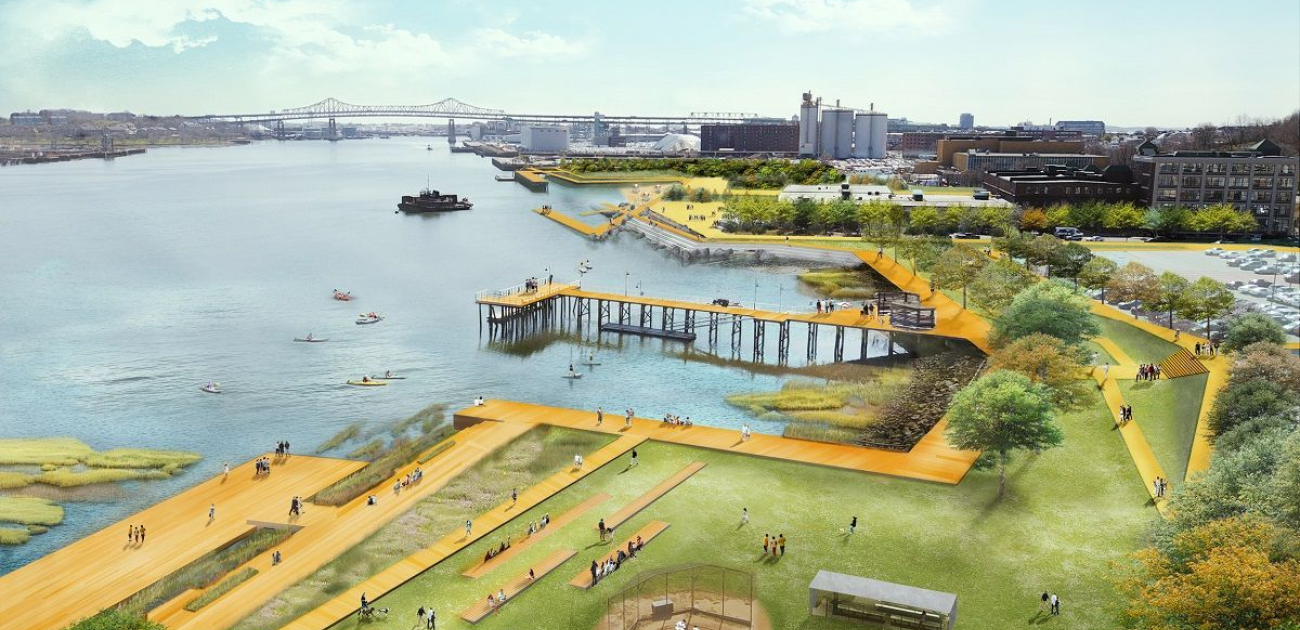Navigating Rising Waters: The Public Waterfront Act
The Commonwealth of Massachusetts prides itself on being “first in the nation” for many milestones: the first public park (Boston Common), the first college (Harvard) and the first to legalize same-sex marriage. A lesser known “first” was the Commonwealth’s formal recognition of the public trust doctrine, a legal concept dating at least to Justinian. The doctrine, first codified by the Colonial Ordinances of the 1640s, obligates the Commonwealth as trustee to ensure that land subject to tidal action is used for public benefit. The doctrine evolved into M.G.L. c. 91(“Chapter 91”), the Public Waterfront Act (“Act”). Historically, the Act focused on preserving public access to the water, protecting tidelands for water-dependent uses such as fishing and boating, and encouraging uses and development that animate the waterfront. However, with record-breaking coastal flooding and sea level rise no longer distant threats, climate resilient waterfront development has become a policy imperative in Chapter 91 licensing.
Chapter 91 is a comprehensive licensing program, administered by the Massachusetts Department of Environmental Protection (“DEP”), to ensure that proposed waterfront development projects meet public benefit standards with respect to environmental protection, public safety, navigation, preservation of historic maritime industries, and recreational, commercial and industrial activities and uses. Licensing by DEP can be a complex and lengthy process, especially for large-scale urban projects. Although DEP has yet to incorporate formal climate resiliency requirements into its licensing program, a prudent project proponent should include climate resilience as an integral part of a project’s public benefit profile in light of the DEP’s recent licensing decisions, public comments and formal requirements established by other regulatory agencies, such as the Boston Redevelopment Authority (d/b/a Boston Planning and Development Agency or “BPDA”).
Do the regulatory homework: Effective representation of a proponent of a waterfront project requires a determination of how the Chapter 91 and associated regulatory standards and policy goals apply to a particular project. See Waterways Regulations, 310 CMR 9.00 et seq., Designated Port Area (DPA) Regulations, 301 CMR 25.00 et seq., Municipal Harbor Plan (MHP) Regulations, 301 CMR 23.00 et seq. Early analysis of site-specific factors by a cross-disciplinary team is often required to identify which Chapter 91 requirements are applicable to a particular site — such as whether the site is historically filled or currently flowed tidelands or is nontidal, whether it is above or below the historic low water mark, and whether it serves water-dependent or nonwater-dependent uses. This is critical to developing an effective Chapter 91 permitting path, and should include evaluation of appropriate climate resiliency measures. For example, as sea levels continue to rise, it would be wise to anticipate whether structures currently above the high water mark, and thus exempt from licensing, may become “intertidal” and thus subject to Chapter 91 jurisdiction.
Review other agencies’ climate change initiatives for guidance: As climate resiliency becomes a policy imperative for the modern world, federal, state and local agencies are increasingly launching initiatives and establishing requirements to protect communities from the adverse effects of climate change. In March, 2016, Governor Baker signed Executive Order 569, “Establishing an Integrated Climate Change Strategy for the Commonwealth,” and in early 2018, authorized over $1.4 billion in capital allocations “to mitigate and adapt to climate change” and “build a more resilient Commonwealth.” These climate resiliency investments include infrastructure repairs and improvements, as well as grants to communities through the Municipal Vulnerability Preparedness Program and the State Hazard Mitigation and Adaptation Plan. In October, 2017, the BPDA formally integrated climate resilience measures into its approval process under Boston Zoning Code Article 80 for Large Project, Planned Development Area and Institutional Master Plan Reviews by requiring a “Climate Resiliency Checklist Report” that incorporates sea level rise, storm surge, extreme precipitation, extreme heat events, and other considerations. Other Boston initiatives include the recently-approved Downtown Waterfront Municipal Harbor Plan, which encourages a comprehensive, district-wide approach to creating a climate resilient waterfront that overcomes the limitations of a parcel-by-parcel permitting process, and Climate Ready Boston, an ongoing city-wide planning effort to address the effects of climate change. At the federal level, the newly revised Federal Emergency Management Agency flood hazard maps increase the reach of flood zones and show a stepped-up focus on the topic.
Consider climate resilience measures in recently approved projects: Many questions remain on the Chapter 91 licensing implications of many potential climate resiliency measures. Can raised seawalls or berms be licensed if they reduce public pedestrian access? Would a flood protection berm consisting of new fill in flowed tidelands be licensable? Would raising the grade of a project site to anticipate rising sea levels allow for a commensurate increase in building height? What is the scope of responsibility for an individual licensee whose site is located on an area-wide flood zone and whose flood protection activities may not be effective until the entire area is protected?
Regulatory uncertainty notwithstanding, it is clear that adapting to sea level rise is necessary for the long-term viability of a waterfront project. For instance, the developers of Clippership Wharf in East Boston have designed a floodable harbor-walk that can act as a buffer for high seas and are importing significant amounts of new fill to raise parts of the seven-acre site above anticipated flood levels. The developers of a large mixed-use campus at Suffolk Downs in Boston-Revere have proposed a sunken amphitheater with capacity to hold millions of cubic feet of flood water for days to address anticipated flood levels. The developers of the L Street Power Station in South Boston have proposed an elevated floor of the building to accommodate the possible need to raise the ground level while maintaining a reasonable floor to ceiling height.
In short, even in the absence of clear regulatory requirements, waterfront development proponents should incorporate climate resilience measures early in the licensing strategy, not only to extend the project’s design life, but also to facilitate the licensing approval by anticipating the public benefit expectations of the DEP and interests of the waterfront communities.
Do you want more information?
 Matthew Kiefer
Matthew KieferMatthew Kiefer is a real estate development and land use lawyer who helps for-profit and not-for-profit clients obtain site control and development approvals from public agencies for complex urban projects.

